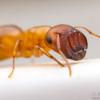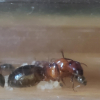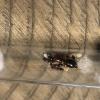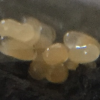- Formiculture.com
- Forums
- Gallery
- Members
- Member Map
- Chat

3 replies to this topic
#1
 Offline
-
Posted May 2 2018 - 7:24 PM
Offline
-
Posted May 2 2018 - 7:24 PM
I live in East Tennessee. I was ant hunting around 8:00 - 9:30 P.M. and noticed a few things:
1) It was warm and windy
2) Moderately humid
3) THERE WERE MALE DRONES EVERYWHERE
4) Absolutely no queens
I have absolutely no idea what species the drones were from; however, I know that I saw no queens whatsoever in the hour-and-a-half that I was searching. Does anyone know why this is? Why I saw so many males flying and hovering around lights—yet no queens?
1) It was warm and windy
2) Moderately humid
3) THERE WERE MALE DRONES EVERYWHERE
4) Absolutely no queens
I have absolutely no idea what species the drones were from; however, I know that I saw no queens whatsoever in the hour-and-a-half that I was searching. Does anyone know why this is? Why I saw so many males flying and hovering around lights—yet no queens?
Nurturer of:
• 1 Camponotus castaneus
• 1 Camponotus subbarbatus
• 1 Formica incerta
• 1 Formica subsericea
• 1 Crematogaster cf. ashmeadi
• 1 Crematogaster missouriensis
#2
 Online
-
Posted May 2 2018 - 8:36 PM
Online
-
Posted May 2 2018 - 8:36 PM
Usually the males fly before the females join them.
#3
 Offline
-
Posted May 2 2018 - 9:03 PM
Offline
-
Posted May 2 2018 - 9:03 PM
Just like Drew said, I've read that males fly first to find a suitable location then the females follow after. If there were that many males then chances are the females would've flown sometime after also. You may have missed them or some of those males may have been actually females. Some species have pretty large males.
Keeping: Camponotus sansabeanus - C. vicinus - Formica francoeuri - Liometopum occidentale - Pogonomyrmex californicus - P. rugosus - P. subnitidus - Solenopsis molesta - S. xyloni - Tapinoma sessile - Temnothorax sp.
Journals: Camponotus sansabeanus & C. vicinus | Pogonomyrmex californicus & P. rugosus | Solenopsis molesta & S. xyloni
Discontinued: Pogonomyrmex subnitidus
#4
 Offline
-
Posted May 3 2018 - 3:57 AM
Offline
-
Posted May 3 2018 - 3:57 AM
So, what span of time do they fly before the queens? For example—minutes, hours, a day, etc.
Nurturer of:
• 1 Camponotus castaneus
• 1 Camponotus subbarbatus
• 1 Formica incerta
• 1 Formica subsericea
• 1 Crematogaster cf. ashmeadi
• 1 Crematogaster missouriensis
Also tagged with one or more of these keywords: males, queens, nuptial flights
 |
Ant Keeping →
General Ant Keeping →
New Tapinoma sessile Mega colony (wild)Started by Artisan_Ants , Mar 22 2024 |
|

|
|
 |
Anting →
General Anting →
Northern/Southern Pennsylvania AntingStarted by Artisan_Ants , Feb 6 2024 |
|

|
|
Anting →
General Anting →
Myrmecocystus wheelriStarted by Tanks , Sep 2 2023 |
|

|
||
Ant Keeping →
Ant Keeping Journals →
FinWins Solenopsis molesta sp.Started by FinWins , Jun 20 2023 |
|

|
||
Market Place →
General Market Place →
Selling Camponotus pennsylvanicus QueensStarted by AntsExpo , Jun 14 2023 |
|

|
0 user(s) are reading this topic
0 members, 0 guests, 0 anonymous users














